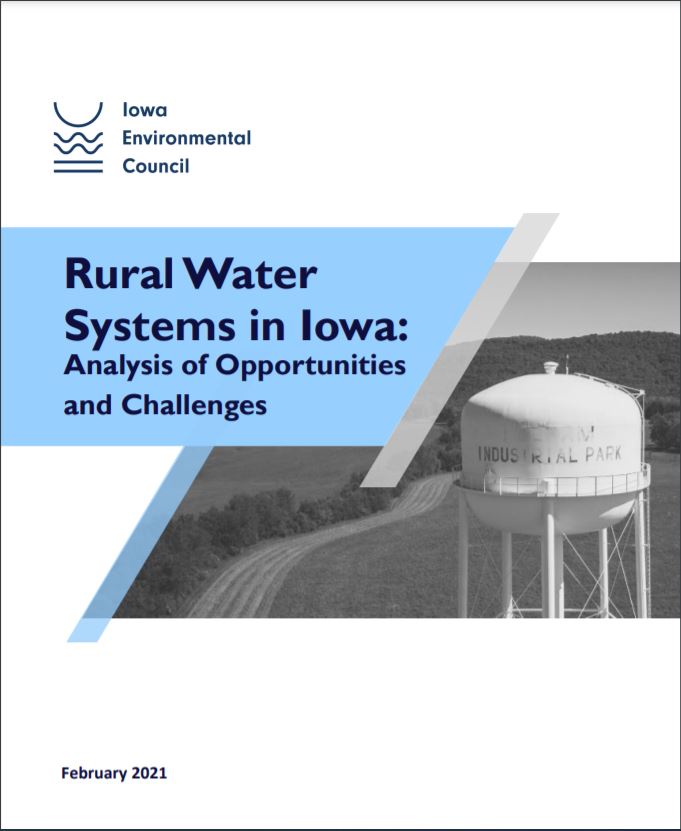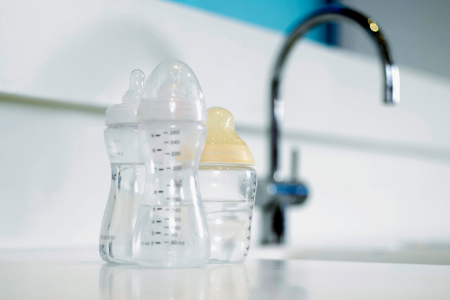Iowa's Drinking Water and the Infrastructure Act
posted
on Tuesday, December 14, 2021
in
Water and Land News
The bipartisan Infrastructure Investment & Jobs Act (IIJA) passed through Congress and was signed into law by President Biden last month. The legislation marks a historic investment in infrastructure. Iowans will see billions of dollars in funding to address critical road and bridge repairs, water infrastructure improvements, public transportation investments, and much more. This includes $638 million to improve water infrastructure over five years, including funding to replace all lead pipes.
Conversation is now beginning around the specifics of how the funding will actually be spent by states, with Governor Reynolds’ administration making comments on spending plans and multiple articles appearing in Iowa newspapers in recent weeks. The Governor also announced spending plans for the federal dollars provided through the American Rescue Plan Act last week. Most of that funding will go toward watershed protection projects and wastewater infrastructure.
U.S. EPA Administrator Regan wrote to Governor Reynolds, urging her to direct IIJA dollars to historically underserved communities that face challenges accessing clean drinking water. In Iowa, many communities facing these challenges have difficulty affording costly upgrades including small towns, rural Iowans, and marginalized communities that remain on lead service lines. The EPA says that these kinds of communities have not received their fair share of federal water infrastructure funding in the past, but the new law provides a historic opportunity to correct that disparity.
Rural Water
 Water infrastructure has seen little public investment in recent decades, with many public water systems relying on pipe and treatment facilities that are decades old. As documented in the Iowa Environmental Council’s Rural Water Systems in Iowa: Analysis of Opportunities and Challenges report released earlier this year, in 2018 the U.S. EPA estimated $8 billion is needed to upgrade drinking water infrastructure in Iowa, primarily transmission and distribution (74%).
Water infrastructure has seen little public investment in recent decades, with many public water systems relying on pipe and treatment facilities that are decades old. As documented in the Iowa Environmental Council’s Rural Water Systems in Iowa: Analysis of Opportunities and Challenges report released earlier this year, in 2018 the U.S. EPA estimated $8 billion is needed to upgrade drinking water infrastructure in Iowa, primarily transmission and distribution (74%).
EPA estimates that 20% of a person’s exposure to lead comes from water, climbing to 60% for infants fed with formula using tap water. While no level of lead exposure is safe for children, a recent study found that 76% of Iowa children under age six had detectable levels of lead in their bloodstream, the fourth worst in the nation.

Some states have established programs to address the replacement of lead service lines (LSL). Programs in New York and New Jersey prioritized LSL replacement based on household income and infant blood lead levels. Pennsylvania and Washington, D.C. provide support to residents to replace customer-owned LSLs. Wisconsin’s LSL replacement program prioritized assistance to municipalities based on hardship of raising revenue. This is often felt by small municipalities with fewer customers to spread costs across.
IEC’s rural water report cites evidence that small municipal and rural water systems face difficult decisions about how to continue providing clean drinking water to customers without substantially increasing rates. Water systems that have made upgrades in order to comply with drinking water
 standards have had to increase customer rates. Even in Iowa’s more populous communities, water systems and community leaders are feeling the pressure of unpopular decisions. The City of Fort Dodge is advancing plans to increase customer rates by 75 cents to $3 per month to pay for increased expenses associated with upgrades to its drinking water system. “We’re in danger of making water unaffordable in the community,” said one city councilperson.
standards have had to increase customer rates. Even in Iowa’s more populous communities, water systems and community leaders are feeling the pressure of unpopular decisions. The City of Fort Dodge is advancing plans to increase customer rates by 75 cents to $3 per month to pay for increased expenses associated with upgrades to its drinking water system. “We’re in danger of making water unaffordable in the community,” said one city councilperson.
Private Wells
Private well users are especially at risk of drinking contaminated water. Approximately 10% of Iowans rely on private wells for household needs. Private wells remain unregulated under the Safe Drinking Water Act, with no funding available to help treat contaminated wells. IEC’s report shows that private well owners may choose to connect to regulated rural water systems if financial assistance was available for them to do so. Another way to protect private well users is to invest more in the Grants to Counties program to provide assistance to well owners. The legislature could expand the program to include assistance to treat contaminated wells.
Proposed Solutions
IEC’s report suggests that rural Iowans would benefit from comprehensive regional or state-level planning for drinking water treatment and access. Such regional or state-level planning could address issues that have become more urgent in recent years, including climate change impacts on water quantity and availability. A coordinated approach to identify issues and respond strategically would greatly benefit a chronically underinvested industry. It would be smart and strategic for Governor Reynolds to consider investing some of these federal dollars into such an initiative.
- clean water
- drinking water
- environmental justice
- public health
- water quality